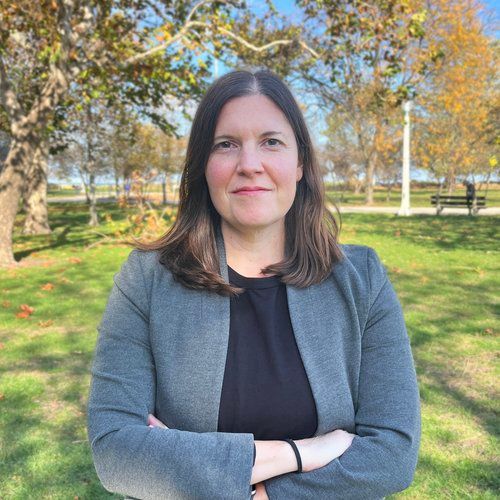Expert Insight: Building resilience at the local level
)
Laura Jay
Deputy Director, Climate Mayors
Join Laura Jay for the 2025 opening Keynote: Full Steam Ahead - Climate Action at the Local Level

Cities across the US have a long history of leading and innovating in climate action. While changes occur at other levels of government, mayors continue to implement projects at the local level that create jobs, lower energy bills and healthier communities for residents.
Environment Analyst's Editorial Director, Emma Chynoweth, talks to Laura Jay, deputy director of Climate Mayors, ahead of her keynote at the upcoming Sustainability Delivery Summit in Chicago in June.
EA: What is the role of mayors in promoting sustainable and resilient infrastructure, and how is that role evolving?
Laura Jay: Over the past decade we've seen mayors across the country increasingly engaged in sustainability and resilience related to infrastructure. This is because they are seeing the impacts of not investing and how important it is to their cities.
By addressing sustainability, they can create jobs, build and diversify the local economy, and help their constituents to lower their cost of living, including reducing their energy bills.
For a lot of mayors, that's common sense. It is at the core of what they want to be doing for their communities.
Additionally, increasingly they are seeing the impacts of extreme weather events on their cities. Often they are the first line of defence when disasters happen. They also live in their communities, so they feel the impacts directly. They can't ignore it.
It is interesting to note, there are mayors who haven't historically prioritised climate change and resilience, who are now. This is because they have been hit by extreme weather events, whether it is flooding, wildfires or hurricanes, like we saw in North Carolina, Florida and Georgia last year.
They cannot ignore the fact that extreme weather is happening, and will continue to happen.
As the new administration rolls back support for this work, I think mayors will continue to be committed to it because they know it's building their local economy, it's creating jobs, and it's a way to help lower people's daily costs.
However, the challenge at the moment how they go about this work, is in limbo right now. The last administration promised a lot of federal money to help them, and now that is being walked back. So cities are having to think of different ways to get this important work done. They are looking at new partnerships and coalitions to fill the gap left by the current administration.
If we look back to the first Trump administration, mayors have worked unwaveringly investing in their local communities. They are, and continue to be, one of the strongest and most stable actors at the government level on climate year-on-year. The current administration is going to change both the way that we talk about this work, and the way that we get it done – but that doesn't mean that the things aren't getting done or won't get done.
EA: How are cities being hit by the roll back of federal funding?
Laura Jay: There are a lot of local communities and local governments who have had their grants paused, cancelled and others that don't know what's going on. It does depend on the programme, but generally the work is very much in limbo.
For example, a major part of the Federal Emergency Management Agency (FEMA) Building Resilient Infrastructure and Communities (BRIC) Program for building resilience has been cancelled. The administration says FEMA had politicised the climate issue and that the agency should just be about responding to weather.
This is hard to swallow when we know that investing in up front resilience makes a huge difference in how impacted a community is by extreme weather.
For BRIC, if cities have already been awarded the money, they are generally fine. If applications are in process, then that's likely to be cancelled. But we're still trying to figure out what this means. Because this is a critical programme to make sure that cities and local communities can build resiliency. So that when they're hit with extreme weather, they are better prepared and can bounce back faster.
It is important to remember that there are some elements of federal activities that only Congress can change. But, unfortunately, there is so much confusion and noise, people think these programmes are also paused or stopped, or that they're at risk. Without the certainty that these programmes will be around, people aren't going to them to seek funding.
Cities are trying to combat this by creating certainty, and making it known that these projects are needed and happening.
For example, one of the big programmes that is in limbo is the Greenhouse Gas Reduction Fund, which is a mechanism to finance climate-related infrastructure projects. It is now caught up in the courts, as the US Environmental Protection Agency (EPA) is trying to cancel it.
As a result, that stream of financing is now on hold. And we are seeing projects move abroad as they cannot secure financing here in the US.
But cities are already starting to create some momentum by setting up local green banks. There are those that have done this historically, for example, Washington DC and New York. But more are doing this, for example, Louisville has set up a local green bank.
There are also a number of cities that have launched bond issuance or voter approved tax levies to finance local climate work. Columbus voted on a transportation-focused bond to help build a regional transportation network. Nashville is another example. These are two more conservative places, so I think that we'll start to see more of this type of activity.
The big federal programmes have normalised what a green bank is, and shown how important they are to help finance these projects. It has helped to bring the finance community along. Again, these projects may use a different language – how projects are framed is really important right now. But that doesn't mean that they're not the same kinds of projects.
EA: What other challenges are city mayors facing in this work?
Laura Jay: The issue of workforce and skills is critical. There continues to be a gap in terms of what is needed to support the growing demand from the building and construction sector. A lot of cities have been partnering with their local community colleges to run apprenticeship programmes.
C40 has done some work to increase workforce in the building sector to address energy efficiency in the US. On average, the largest source of greenhouse gas emissions in cities is buildings. To reduce them new equipment has to be installed, such as new windows, insulation or equipment like heat pumps, induction stoves or solar panels. This all requires skilled workers and at the moment there is a big skills gap.
There is also a question of knowledge. Some companies are not up-to-date on the latest energy efficient, low carbon technologies, or the incentives and tax breaks that are available to encourage people to invest.
Cities can play a role in this, along with local governments, not only by working with colleges, but also by setting strong municipal goals that give the market certainty.
Chicago has recently announced a green social housing programme that will see a lot of building across the city. This is a huge indicator, not only to the developers' market, but also those training the workforce.
EA: How do the economics of green social housing play out?
Laura Jay: There are a lot of people that believe that you have to choose between affordable housing solutions or sustainability. We are trying to change that narrative. You can do both, especially if you consider household affordability, and look more holistically at the expenses that are needed to live.
This includes utilities and transportation. If people have to drive a long way to get to work, buy food and do the things they want to do, and the cost of gas is high, then that's part of household affordability. At the moment you can't buy a cheap car because of the new tariffs. So it is much better to have better transit options that help reduce costs for people. In addition, energy costs are really high, so taking action to reduce energy bills makes sense.
So that is the narrative that we're trying to shift to, because that framing of cost of living is central to how people are thinking right now. In addition, this way of thinking does not rely on oversubscribed federal subsidies.
EA: How do cities build up their internal expertise and when do you turn to consultancies?
Laura Jay: For a lot of local governments, their levels of expertise on sustainability very much depends on their size. A city like New York has hundreds of thousands of employees. But still the scale of the projects that they do is so large that they put out a lot of work to consultants.
Larger cities do have a lot of internal expertise. They can afford to have staff that are experts in specific areas.
It is a completely different picture for mid-size and smaller cities. They will be lucky if they have a sustainability director and a small staff, and often some of these employees will be grant funded. They may have specific programmes, like implementing a recycling project or doing energy benchmarking, which might be paid for through philanthropy.
For these examples, they will have someone with expertise in recycling or energy benchmarking. But if they want to do planning documents, or stakeholder engagement, or if they want to do detailed scoping in areas where they don't have expertise, they will call in external help.
In this last example, a workforce assessment will be done to indicate the staff needs relating to demand from local and state policies. Mayors are trying to understand the impacts of policy and where the gaps are and how they need to work with local partners to help address them.
And for some of the bigger infrastructure projects – whether it's larger-scale renewable energy and engineering projects – that's where the big engineering firms come in.
The key message from cities is that the work is not stopping. They are looking at how to get things done in the current political environment.
The consulting world can be confident that cities are nimble and innovative, and that they see this work is important. Cities are going to find new ways to make progress. They need partners to do that, and are looking for new ideas and innovation. They need the best minds in the room and that includes consultants.
Join this conversation and many more at Environment Analyst's Sustainability Delivery Summit in Chicago, from June 9-11 2025.

